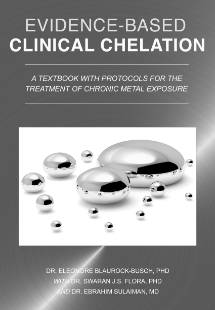|
|
|
|
|
|
|

|
| MTM Newsletter |
N° 38 - April 2025 | |
|
|
|
| |
|
|
|
|
|
| |
|
|
|
Laboratory News
|
 PFAS – The Forever-Chemicals PFAS – The Forever-Chemicals
|
Per- and polyfluoroalkyl substances (PFAS) consist of a large group of man-made chemicals used for their water-, grease-, and stain-resistant properties in products like non-stick cookware, food packaging, water-repellent clothing, and firefighting foams. The active substances in pesticides can also be PFAS.
Also known as "forever chemicals", PFAS are extremely persistent, resisting breakdown over extended periods once introduced into the environment. The fact that these compounds are likely to remain in the environment for a long time increases the likelihood of their presence in water and food, and raises concerns about their lasting impact on human health and the environment.
Testing material:
- 3-5ml Whole Blood
- 5-7ml Urine
- 5-7ml Water
|
 Sodium Thiosulfate (STS), antioxidant and chelating agent Sodium Thiosulfate (STS), antioxidant and chelating agent
|
Sodium thiosulfate (STS) is a powerful antioxidant and water-soluble chelating agent, Florida University researchers say. STS has been traditionally used for cyanide poisoning and cisplatin toxicity, but has proven to be a strong calcium chelator. There are increasing reports of STS being used off-label to successfully treat both uremic and nonuremic calciphylaxis.
[1]
While attending a Malaysian congress on metal chelation in 2006, Dr. Sulaiman of Kuala Lumpur, speaker and organizer told that he considers STS an alternative for NaEDTA or NaMgEDTA treatment. This chelating agent, he said, is an overlooked metal chelator with a strong calcium binding ability. The World Health Organization agrees. STS is on the World Health Organization's List of Essential Medicines.
[2] Other uses include topical treatment of ringworm and tinea versicolor, plus the treatment of side effects of chemotherapy. Sodium thiosulfate interacts with cisplatin to produce an inactive platinum species, reducing the risk of ototoxicity. Sodium thiosulfate also increases the level of glutathione, the natural antioxidant in the body that neutralizes free radicals.
In September 2022, the U.S. Food and Drug Administration (FDA) approved sodium thiosulfate under the trade name Pedmark to lessen the risk of ototoxicity and hearing loss in infant, child, and adolescent cancer patients receiving the chemotherapy medication cisplatin.
[3,4]
Information regarding the use and administration of Pedmark:
https://www.pedmark.com/wp-content/uploads/2022/09/pedmark-pi.pdf
and on our website:
https://microtraceminerals.com/chelation-newsarticles/sodium-thiosulfate
[1] Sodium thiosulfate in the treatment of calciphylaxis - PubMed
( https://pubmed.ncbi.nlm.nih.gov/23710271 )
[2] WHO Model List of Essential Medicines: 21st list 2019
( https://iris.who.int/handle/10665/325771 )
[3] Winstead, Edward (October 6, 2022). "Sodium Thiosulfate Reduces Hearing Loss in Kids with Cancer". National Cancer Institute. Retrieved March 9, 2023.
( https://www.cancer.gov/news-events/cancer-currents-blog/2022/fda-sodium-thiosulfate-cisplatin-hearing-loss-children )
[4] FDA approves sodium thiosulfate to reduce the risk of ototoxicity associated with cisplatin in pediatric patients with localized, non-metastatic solid tumors". U.S. Food and Drug Administration. 20 September 2022. Retrieved 9 March 2023.
( https://www.fda.gov/drugs/resources-information-approved-drugs/fda-approves-sodium-thiosulfate-reduce-risk-ototoxicity-associated-cisplatin-pediatric-patients )
|
 Sodium Thiosulfate and Calcium Research Sodium Thiosulfate and Calcium Research
|
In a double-blind, randomized, placebo-controlled study researches concluded that Sodium thiosulfate failed to retard abdominal aortic calcification progress, but positively affected calcification progress in iliac arteries and heart valves as well as several other cardiovascular functional parameters.
[1]
Similarly, an international team of medical researches
demonstrated that Sodium thiosulfate slowed the progression of
coronary calcification. [2]
A team of researchers at Chulalongkorn University,
Bangkok, Thailand documented with their randomized controlled
trial that Sodium thiosulfate reduces arterial stiffness in in
End-Stage Renal Disease Patients. [3]
Side Effects and Warnings
- Sodium thiosulfate (Pedmark) can cause nausea and vomiting.
- Do not use in patients younger than 1 month.
- Do not use in patients with a history of severe hypersensitivity to sodium thiosulfate or any of its components.
- Monitor patients with hypersensitivity reactions. If a hypersensitivity reaction occurs, discontinue STS and institute appropriate care. Administer glucocorticoids and antihistamines before each subsequent administration.
- Sodium thiosulfate products may contain trace impurities of sodium sulfite. Sodium thiosulfate treatment should not be withheld even if the patient is sulfite-sensitive, because it is used for emergency, life-threatening situations. Sulfite sensitivity is relatively more common in people with asthma.
- STS can increase blood sodium levels and reduce potassium levels. Monitor patients for hypernatremia and hypokalemia. Discontinue in patients with serum sodium greater than 145 mmol/L and institute supportive care and appropriate supplementation.
[1] Djuric P, Dimkovic N, Schlieper G, Djuric Z, Pantelic M, Mitrovic M, Jankovic A, Milanov M, Kuzmanovic Pficer J, Floege J. Sodium thiosulphate and progression of vascular calcification in end-stage renal disease patients: a double-blind, randomized, placebo-controlled study. Nephrol Dial Transplant. 2020 Jan 1;35(1):162-169. doi: 10.1093/ndt/gfz204. PMID: 31764989.
[2] Raggi P, Bellasi A, Bushinsky D, Bover J, Rodriguez M, Ketteler M, Sinha S, Salcedo C, Gillotti K, Padgett C, Garg R, Gold A, Perelló J, Chertow GM. Slowing Progression of Cardiovascular Calcification With SNF472 in Patients on Hemodialysis: Results of a Randomized Phase 2b Study. Circulation. 2020 Mar 3;141(9):728-739. doi: 10.1161/CIRCULATIONAHA.119.044195. Epub 2019 Nov 11. PMID: 31707860.
[3] Donlawat Saengpanit et al. Effect of Sodium Thiosulfate on Arterial Stiffness in End-Stage Renal Disease Patients Undergoing Chronic Hemodialysis (Sodium Thiosulfate-Hemodialysis Study): A Randomized Controlled Trial. Nephron (2018) 139 (3): 219–227.
|
 Silver (Ag) and Argyria Silver (Ag) and Argyria
|
Argyria occurs in people who eat or breathe in silver compounds over a long period. A single exposure to a silver compound may also cause silver to be deposited in the skin and in other parts of the body; however, this is not known to be harmful. The main symptom is the discoloration of the skin.
Exposure may be through dust, causing breathing problems, lung and throat irritation and stomach pain. These effects have been seen in workers in chemical manufacturing facilities that make silver nitrate and silver oxide. Skin contact with silver compounds has been found to cause mild allergic reactions, such as rash, swelling, and inflammation.
Silver is used in water purification systems, because silver prevents bacteria and algae from building up in filters.
Is chelation an option to reduce exposure? Research does not suggest a specific chelating action; however, silver is an element that is naturally excreted via the renal and other systems. Most chelating agents bind silver. Vitamin C and glutathione may be an alternative.
|
 Provocation Urine – What we should know Provocation Urine – What we should know
|
Cobalt (Co)
Finding a measurable amount of cobalt in the urine does not imply that the levels of cobalt cause an adverse health effect. Urinary levels of cobalt decline rapidly within 24 hours after exposure ceases. Baseline urinary measurements reflect recent exposure. It is not unusual for us to detect extreme values of cobalt in urine; these are generally the result of Vitamin B12 administration.
Small studies of patients with hip replacements using metal alloy prostheses reported increased urinary cobalt concentrations, with mean levels that were about 15-20 times higher than in the general population.
More information on cobalt:
https://microtraceminerals.com/the-toxicity-of-metals/cobalt-co
Chromium (Cr)
Brewer’s yeast or Chromium-enriched yeast is the best source of organic chromium. Supplementing yeast products prior to chelation is likely to increase the chromium concentration in urine.
Iron (Fe)
In physiological conditions, circulating iron can be filtered by the glomerulus and is almost completely reabsorbed by the tubular epithelium to prevent urinary iron wasting. Increased urinary iron concentrations have been associated with renal injury. Checking the urine with Test Strips will confirm the presence of blood as the source of iron.
|
 Comparing urine levels before and after chelation Comparing urine levels before and after chelation
|
By comparing the metal excretion level before and after chelation, we easily clarify if an immediate exposure is responsible. For instance:
- Seafood may contain high arsenic or mercury levels. If eaten prior to urine sampling, urinary excretion levels will be elevated. If baseline urine levels are higher or equal to provocation urine test values, we determined immediate exposure as the cause.
- Cigarette smoke contains nickel, cadmium and other toxic metals. By comparing baseline urine values to provocation test values, we detect how effectively we chelated organ-based toxic metals.
- Single element testing is available.
Detailed information on metal chelation you can find in our Book:
EVIDENCE-BASED CLINICAL CHELATION

A Textbook with Protocols for the Treatment of Chronic Metal Exposure
https://microtraceminerals.com/books-by-eblaurock-busch/evidence-based-clinical-chelation
|
 Special Book Offer for our German-speaking clients Special Book Offer for our German-speaking clients
|
We have put together 2 book packages for you.
Package 1

Blaurock-Busch E. Antidota, Handbuch der Klinischen Metalltoxikologie, 156 pages, € 50,00
And you receive free of charge
E. Blaurock-Busch’s Lehrbuch der Nährstofftherapie, Grundlagen und Anwendung der Orthomolekularmedizin, 356
pages, hardcover
|
|
Package 2

Blaurock-Busch E., Strey R. Chronische Metallbelastungen, Toxikologie, Diagnose und Therapie, 280 pages, € 50,00
And you receive free of charge
E. Blaurock-Busch’s Lehrbuch der Nährstofftherapie, Grundlagen und Anwendung der Orthomolekularmedizin, 356
pages, hardcover
To order the books, please contact: service@microtraceminerals.com.
Promotion is only valid until 2025, May 31!
|
| |
| |
|
|
| |
|
|
|
Medical Workshops and Conferences
|
 International Conferences & Workshops 2025 International Conferences & Workshops 2025
|
 |
|
Time:
Saturday, April 26, 2025 9:00 AM (UTC/GMT) - 4:00 PM (UTC/GMT)
(please check and convert to your time)
Yvette M. Busch, chief director of Micro Trace Minerals Laboratory in Germany is pleased to be holding an
English and French seminar in conjunction with the Institut Belge D’Endobiogénie. Her presentation will include updated information on metal toxicology, including different diagnostic methods, protocols and tips on chelation therapy.
This seminar will be held on April 26th, 2025 in Brussels, Belgium.
Below you will find the planned seminar schedule.
- Impact of environmental toxins on health, particularly
neurological.
- Scientifically validated treatment options, including
chelation.
- Introduction to the endobiogenic approach and its
application for enhancing natural detoxification.
- In-depth discussion of treatment protocols, including
those that support the body’s natural
detoxification mechanisms.
- Application of treatments in clinical practice, with a
focus on integrating endobiogeny and natural detoxification
strategies.
Space is limited, so please sign up in a timely manner.
I look forward to meeting and greeting you in Brussels.
Yvette Busch
Interested?
For more information and registration, please visit:
https://endobiogenie.eu/learn/physical/seminar/from-metallic-toxicity-to-balance
Cost: € 185.00
If you have questions, contact us at
ybusch@microtraceminerals.com.
|
|
If you are interested in workshops on environmental issues, chelation, laboratory testing or metal toxicology, check our website:
https://microtraceminerals.com/en/workshops-and-seminars
|
 Webinars Webinars
|
|
At the moment we do not have any webinars planned or scheduled.
|
|
For registration and further information, please visit:
https://www.edudip.com/academy/e.blaurock-busch
|
| |
| |
|
|
|
|
|
|
|

|
|
Happy Easter!
May this joyful season bring you renewed hope, fresh beginnings,
and immense happiness.
Best wishes from
E. Blaurock-Busch, Yvette Busch, and the entire team at
Micro Trace Minerals Laboratory.
|
|
|
|
|
|
| |
|
|
| |
|
|
|
